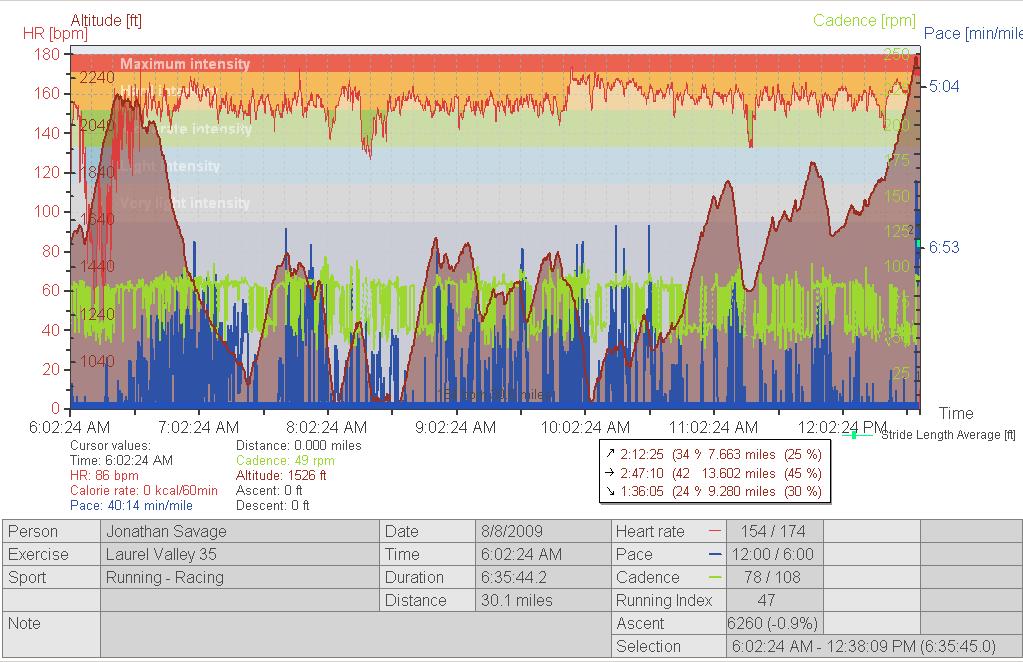2009 Laurel Valley 35
Many (most?) ultras have a unique feature or challenge. The Laurel Valley is unusual in that the access points to the course are at the start and the finish only. This has a number of consequences:
- The race director, Claude Sinclair, wisely requires each competitor to finish a sub-13 hours 50 mile race and to act as a sweep the first time. The sweeps are the last people through the course, traveling as a group. The sweeps are an important safety measure.
- Once you start, you either have to finish or return to the beginning. This means a bad day at LV would be a very, very bad day.
- There is no aid on the course. You have to take everything you need with you. There is water from streams, but it requires purification.
- You can be very isolated on the course. Naturally you can run with someone, but if you are on your own, you can be on your own for a long time. You might not see another person for several hours, which leads to a wonderful and terrible sense of isolation. I loved being on my own for so long, but I also became quite worried that I had lost my way (I knew I had not, but fear gets worse when you are fatigued.)
The course is ~35 miles, but most people agree it feels like 50. My calorie burn equates to about 52 miles of energy expenditure on the flat. The course has some 3,000 steps, some of them very steep. (If you've run Crowder's mountain, the steps are similar.) However, most of the course is very runnable, with some lovely long, fast descents. I'm not sure what the altitude change is; my Polar claims ~6,300' ascent/5,800' descent, but the GPS claims 21,000' ascent/20,000' descent. Navigation is not difficult, but you have to pay attention. The trail is well blazed, but there are a few junctions where things can be a little confusing. I took a Garmin GPS with me and recorded the trail, so you should able use this to give you confidence. (Never trust a GPS unit as the primary navigation technique, at LV or anywhere else.)
The GPS record of the run is available from http://connect.garmin.com/activity/10759362 and you can compare it to a picture of the Polar record at
LV is run in August in the Carolinas, so heat is obviously an issue. At the start, it was hot enough to reduce performance, making everything tougher and slower. By about 11am, the temperature was high enough to forcibly limit performance on the uphill sections. The uphil pace I could maintain was limited by the rise in my core temperature; I could feel my face begin to burn, and was forced to slow up. (If you ignore the warning signs, you can raise your core temperature too high, which can be life threatening. ) The UnderArmour HeatGear Top really made a difference - more on that (and perhaps heat stroke) in a separate blog entry.
I had a good day at LV and I was able to push the pace hard, finishing second place in 6:38. The race requires you to be self reliant, and this builds self confidence. Having run this race inspires me to run other self supported distances in the future. The only downside has been a recurrence of the blisters I got at Massanutten. The nature of my skin is that damage creates permanent scars that are more easily damaged. My right ankle now has a large (2x1 inch) blister. I hope to be able to continue running with some cut down Shoes. I will need to find different Shoes (again) to see if I can find something that will not cause these problems. I am considering moving from a robust shoe (Montrail/Solomon) to something lightweight like the Nike Free Trail or the Inov8.
